Abstract
The statistical analysis of two simultaneously observed trains of neuronal spikes is described, using as a conceptual framework the theory of stochastic point processes.
The first statistical question that arises is whether the observed trains are independent; statistical techniques for testing independence are developed around the notion that, under the null hypothesis, the times of spike occurrence in one train represent random instants in time with respect to the other. If the null hypothesis is rejected—if dependence is attributed to the trains—the problem then becomes that of characterizing the nature and source of the observed dependencies. Statistical signs of various classes of dependencies, including direct interaction and shared input, are discussed and illustrated through computer simulations of interacting neurons. The effects of nonstationarities on the statistical measures for simultaneous spike trains are also discussed. For two-train comparisons of irregularly discharging nerve cells, moderate nonstationarities are shown to have little effect on the detection of interactions.
Combining repetitive stimulation and simultaneous recording of spike trains from two (or more) neurons yields additional clues as to possible modes of interaction among the monitored neurons; the theory presented is illustrated by an application to experimentally obtained data from auditory neurons.
A companion paper covers the analysis of single spike trains.
Full text
PDF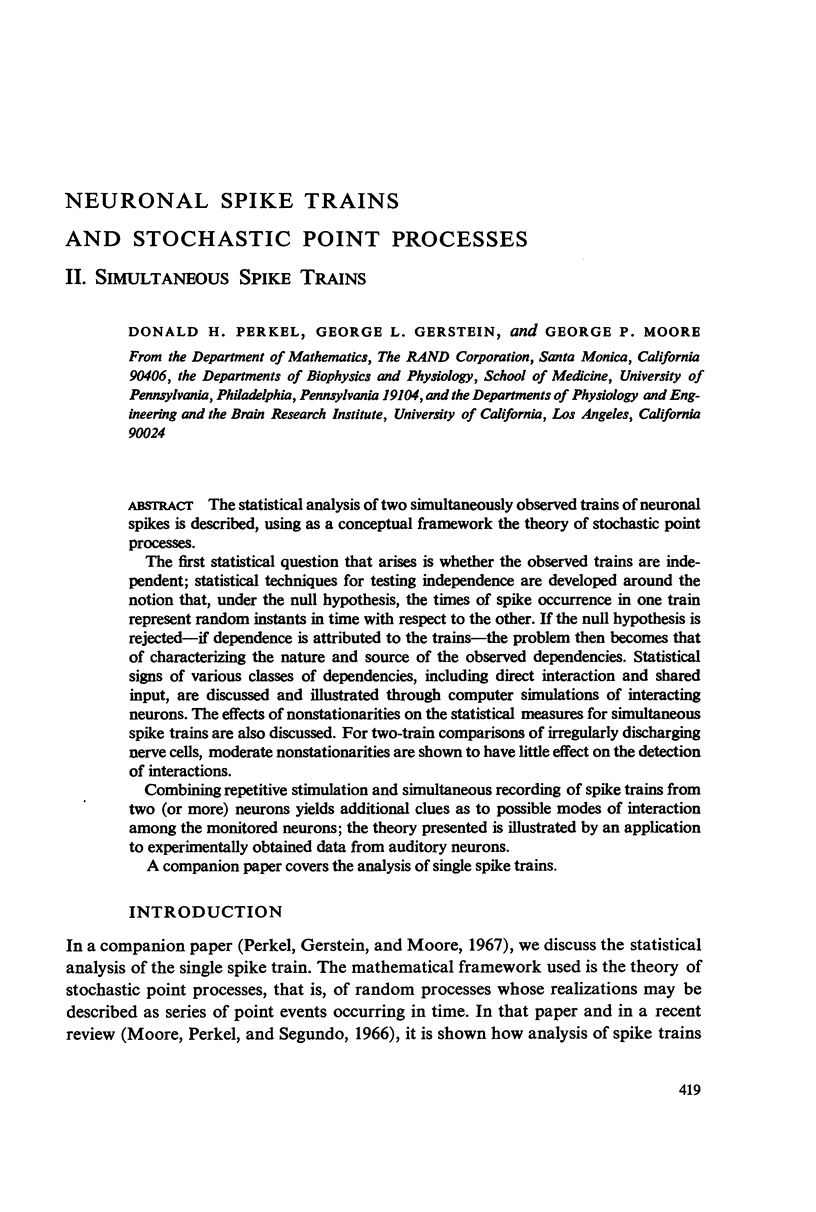

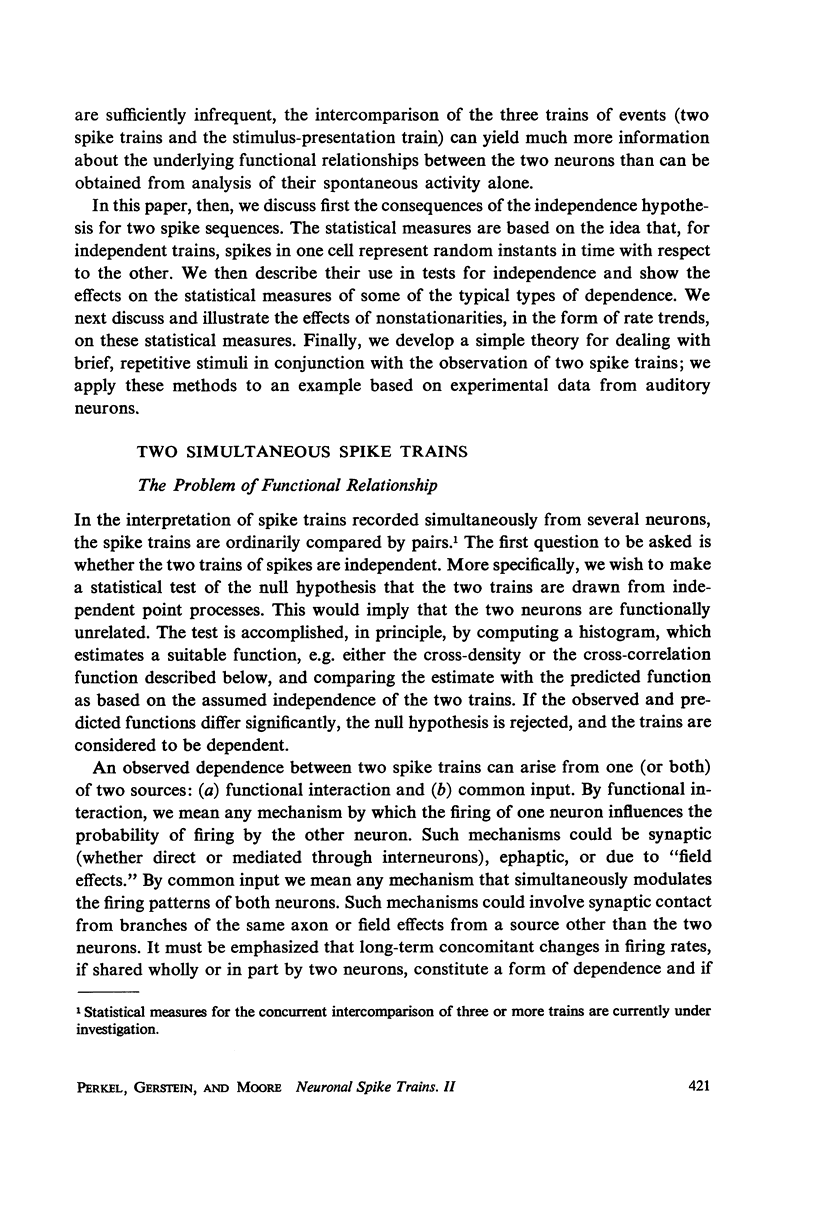
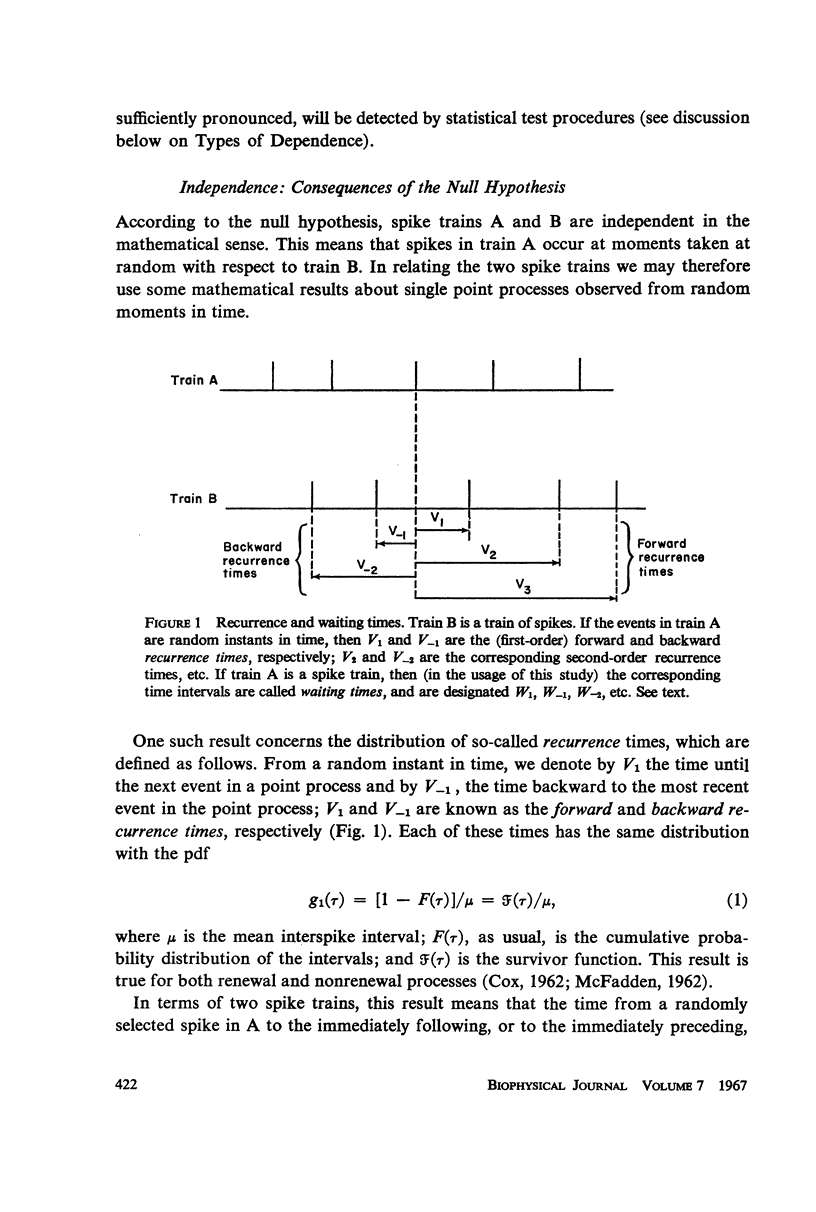
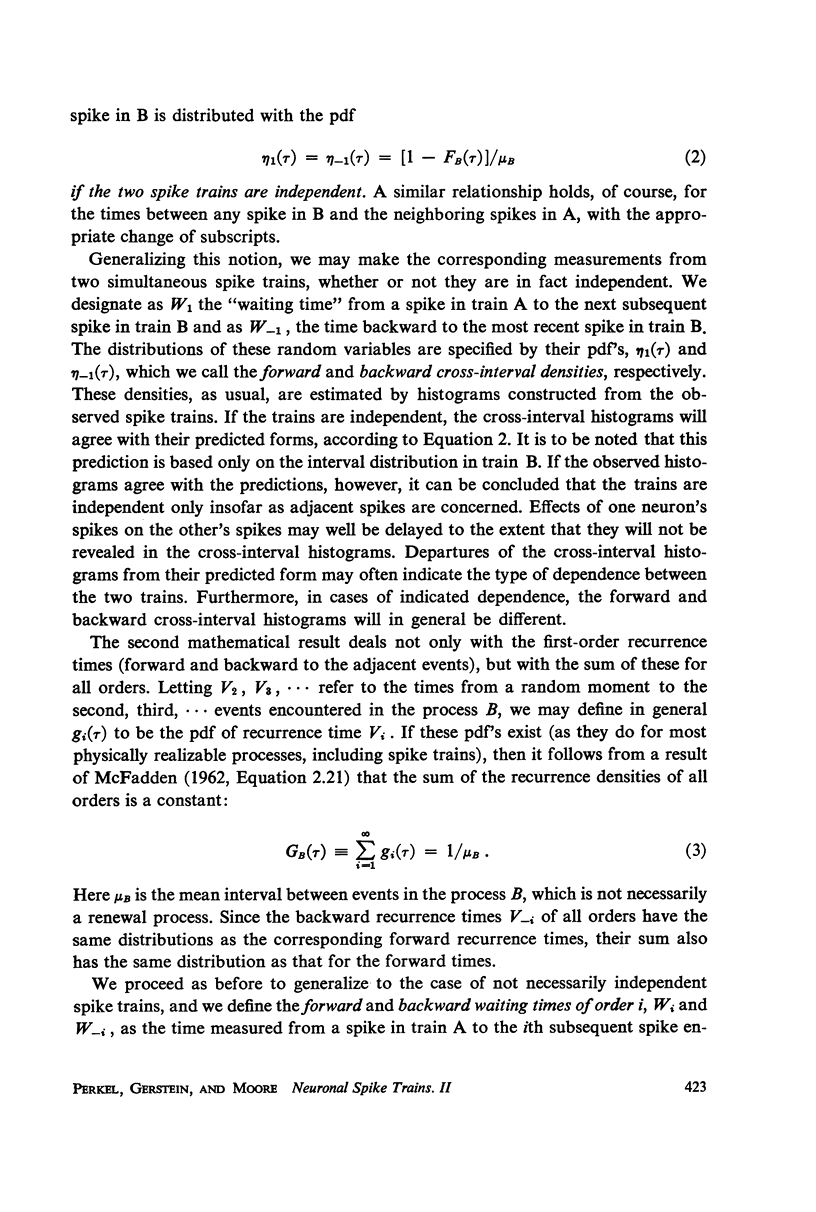
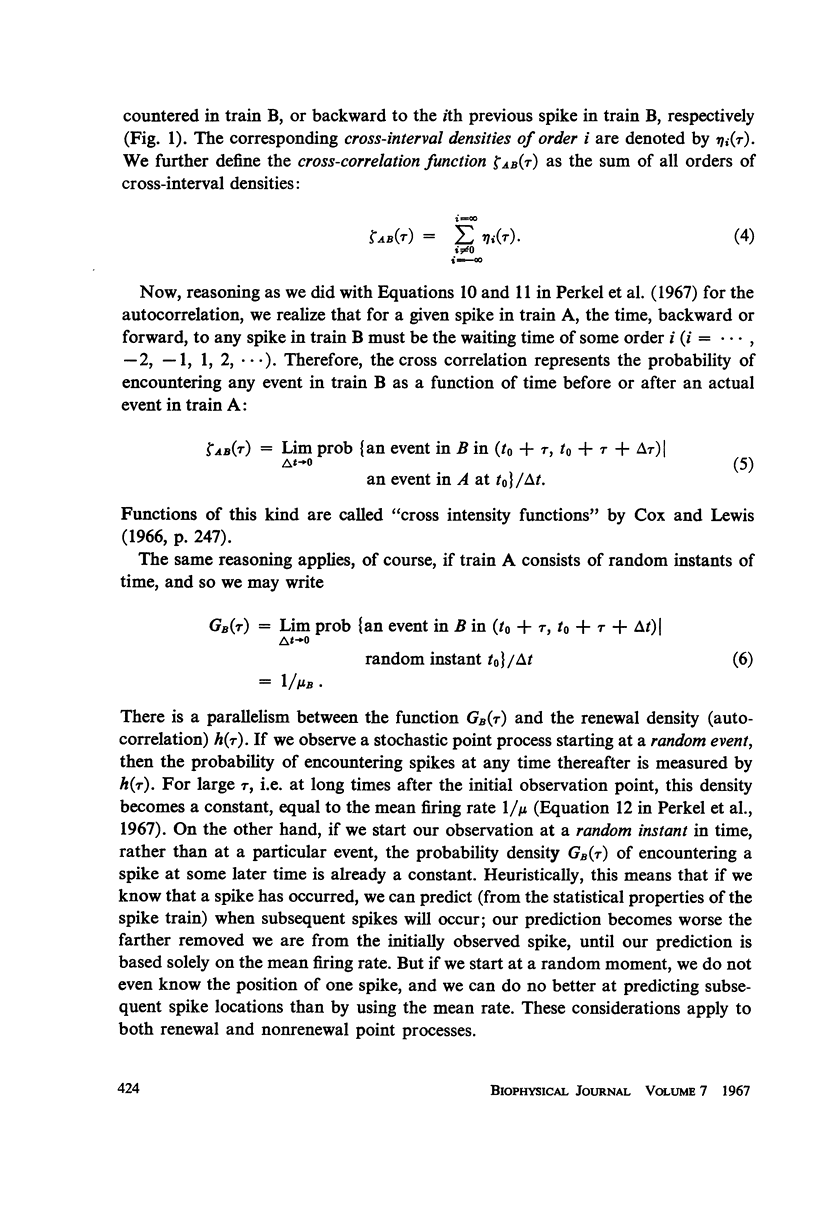
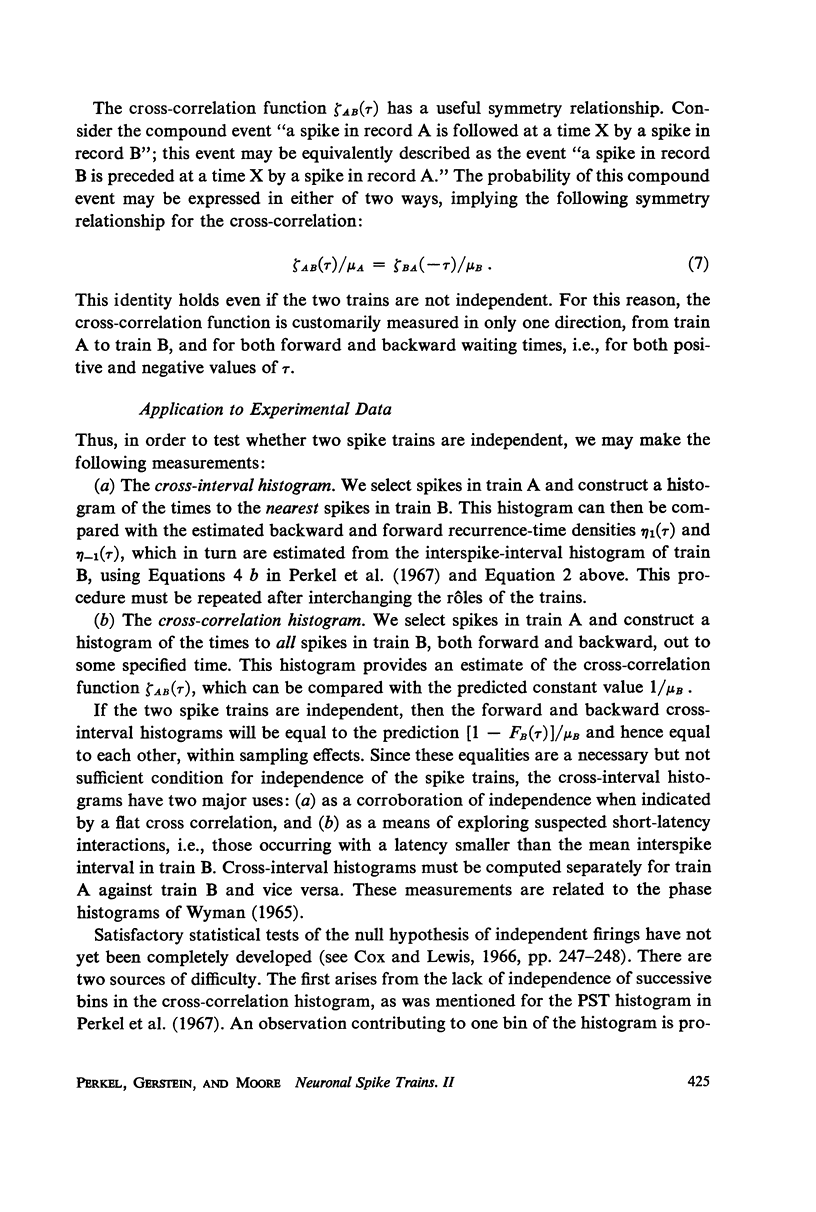

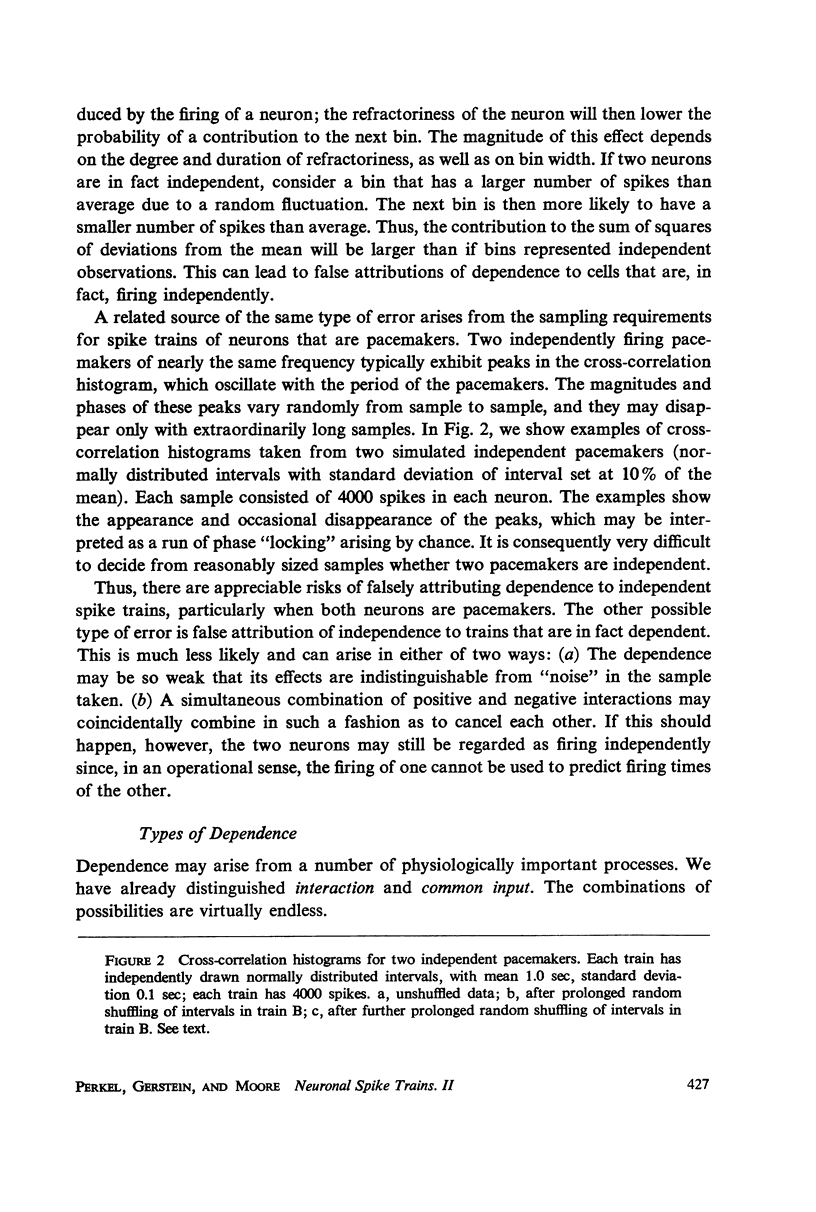


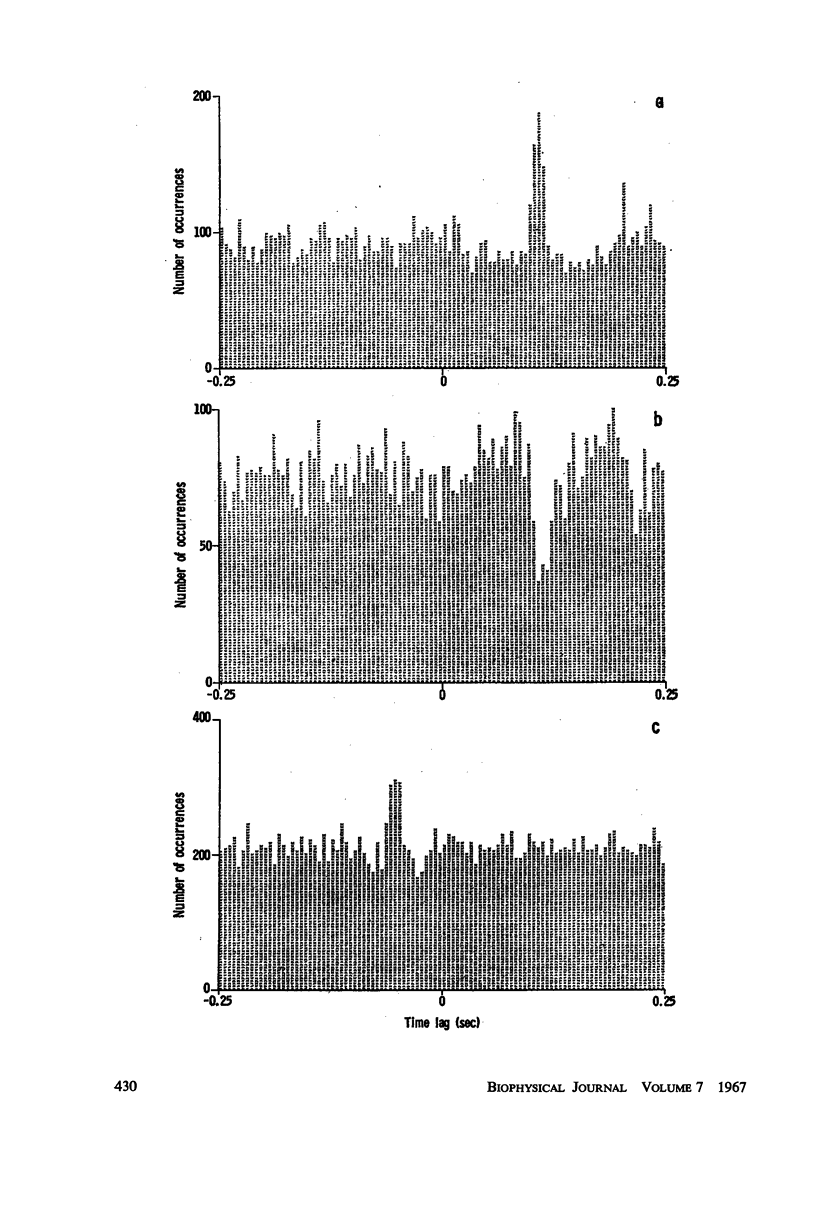
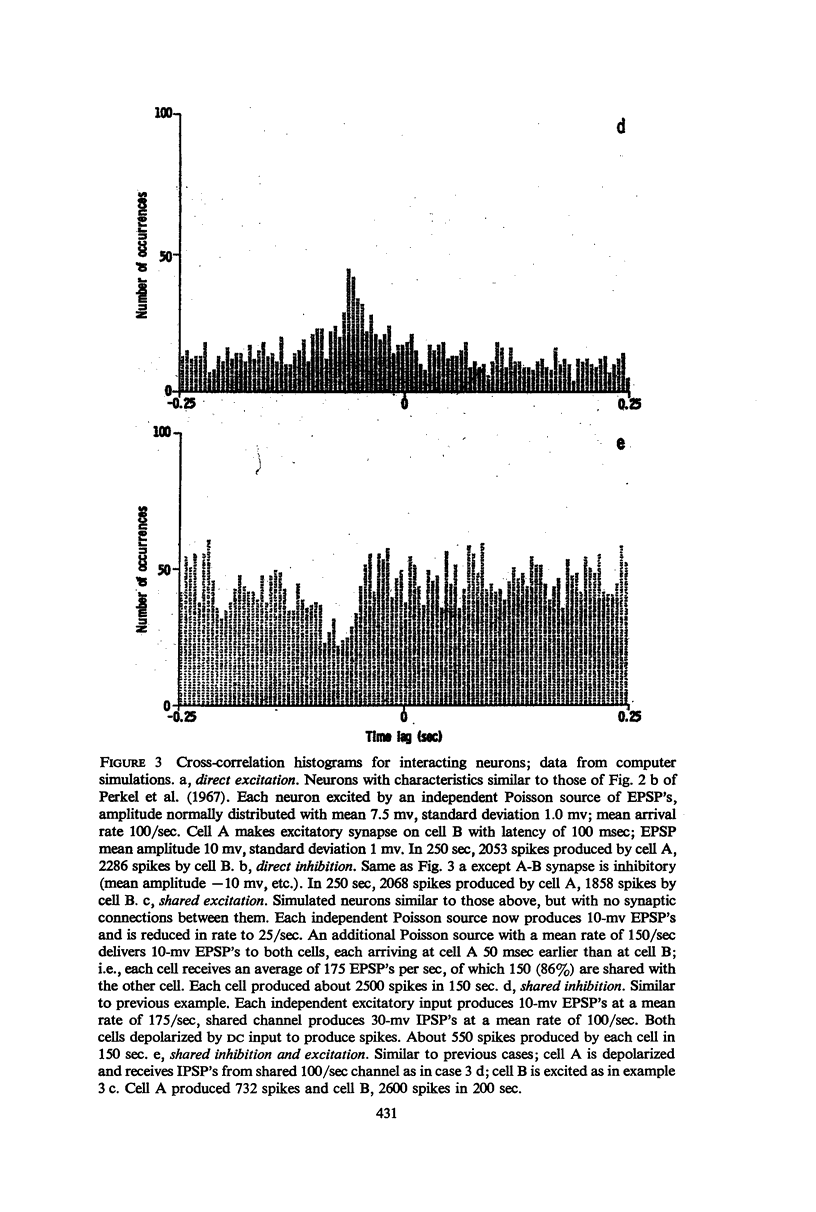
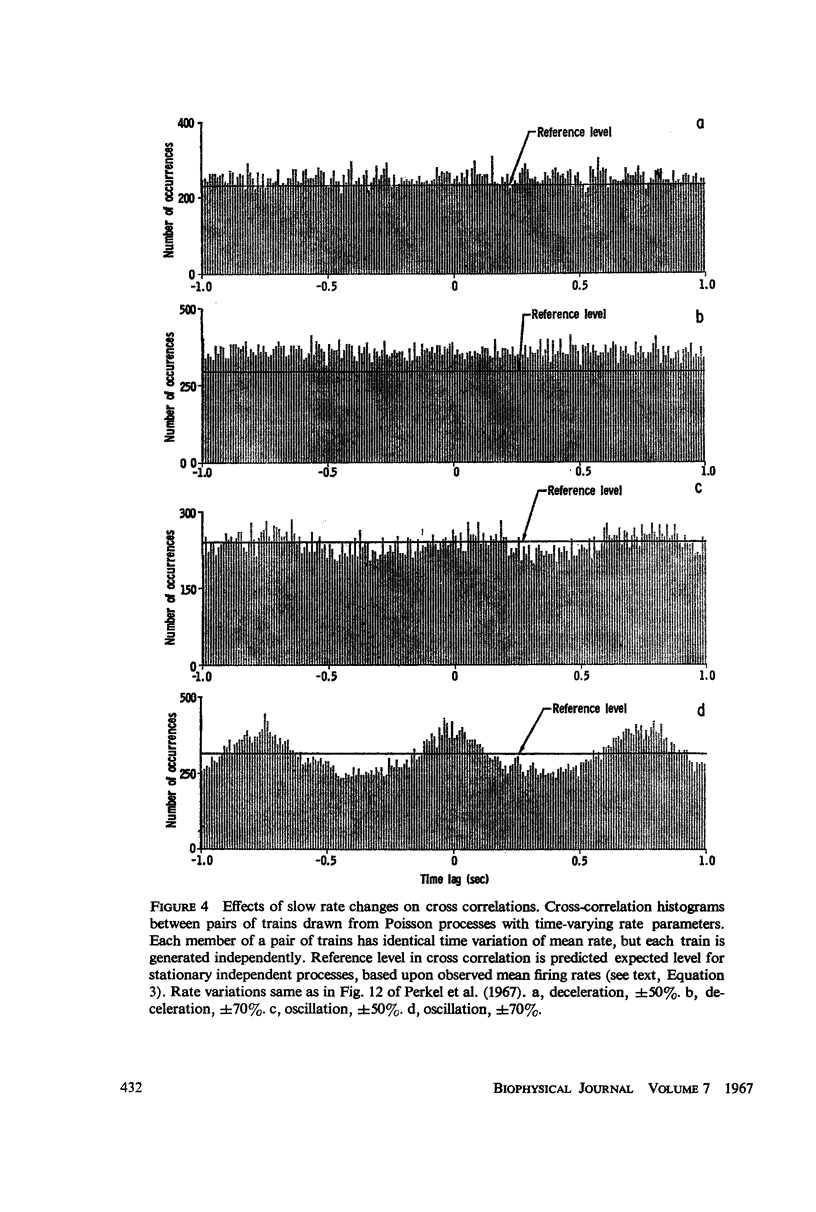
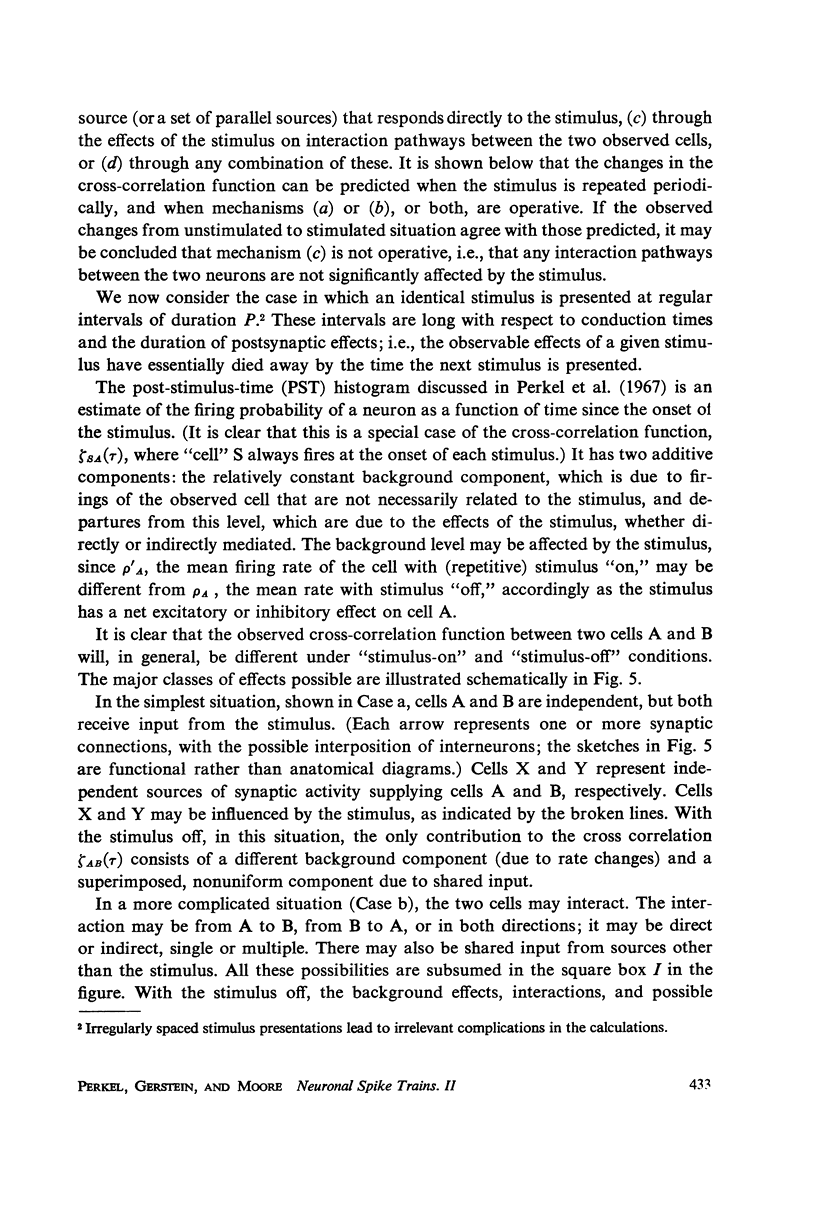
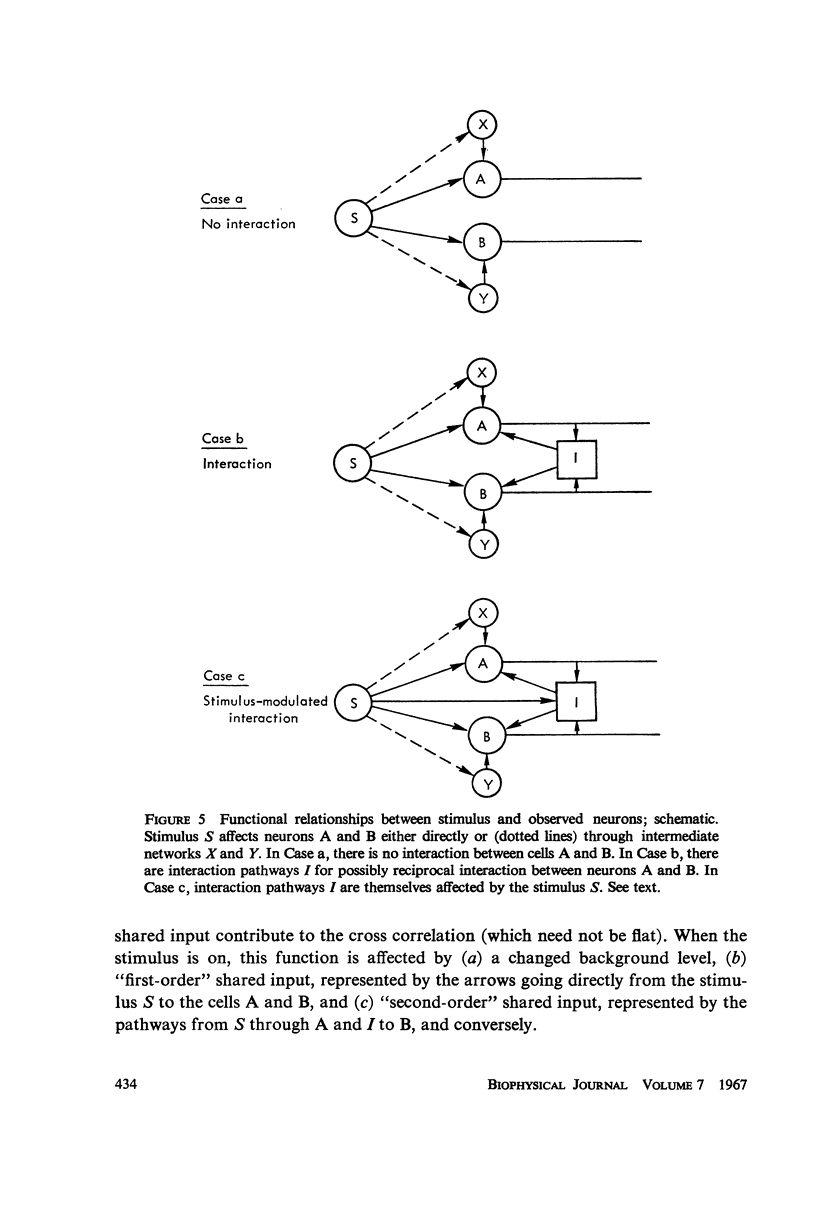
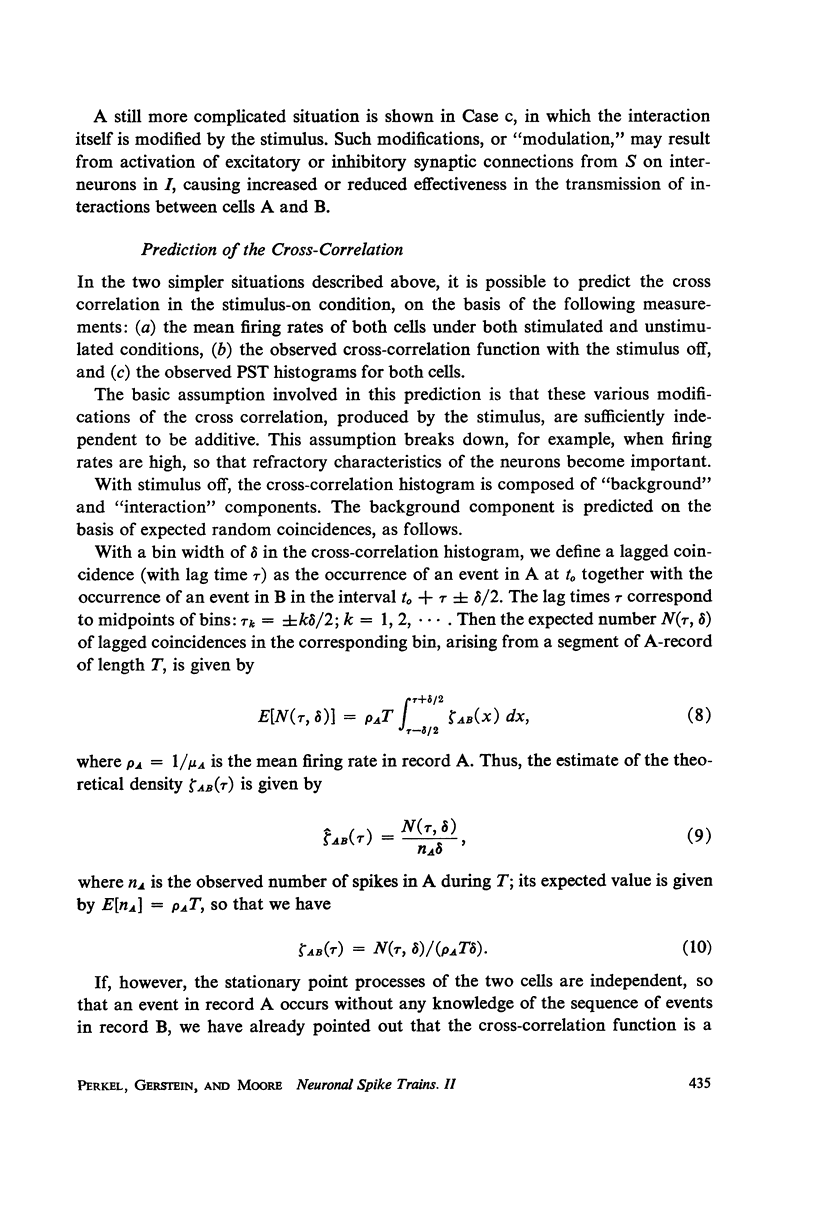
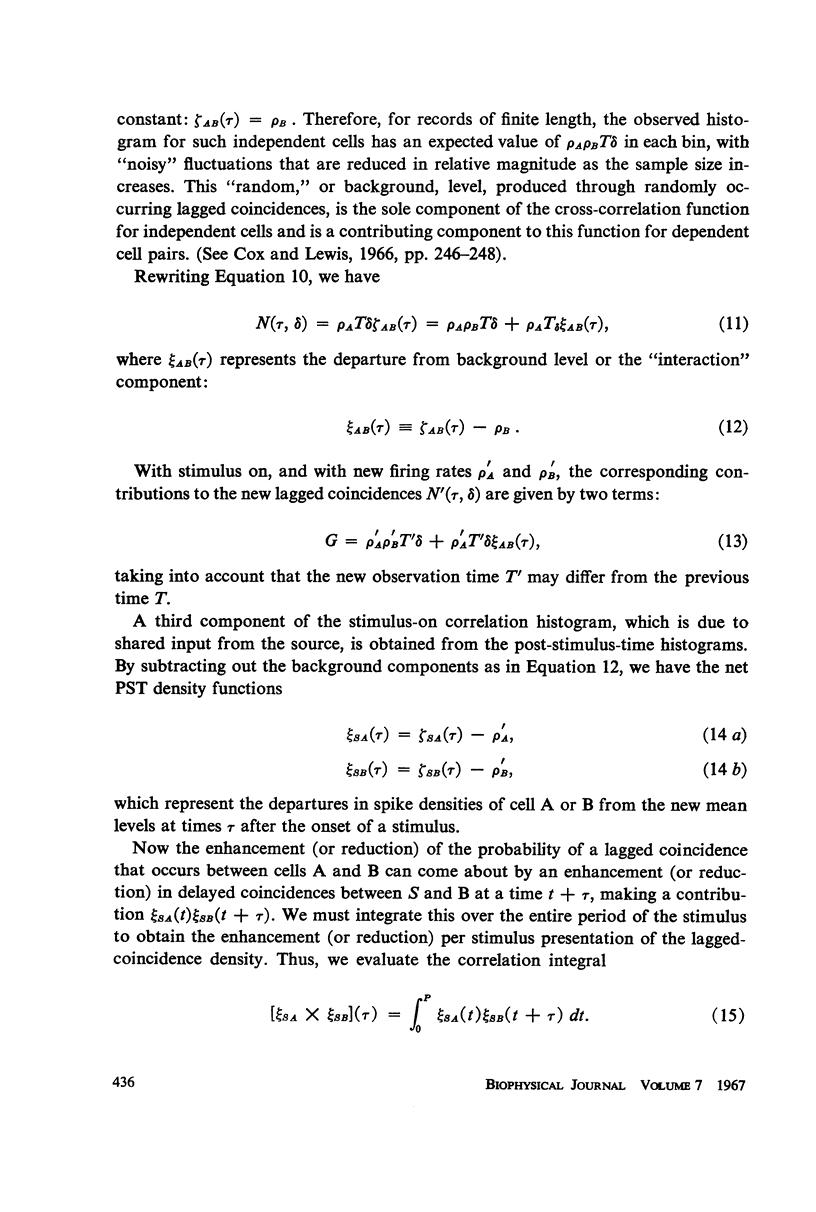
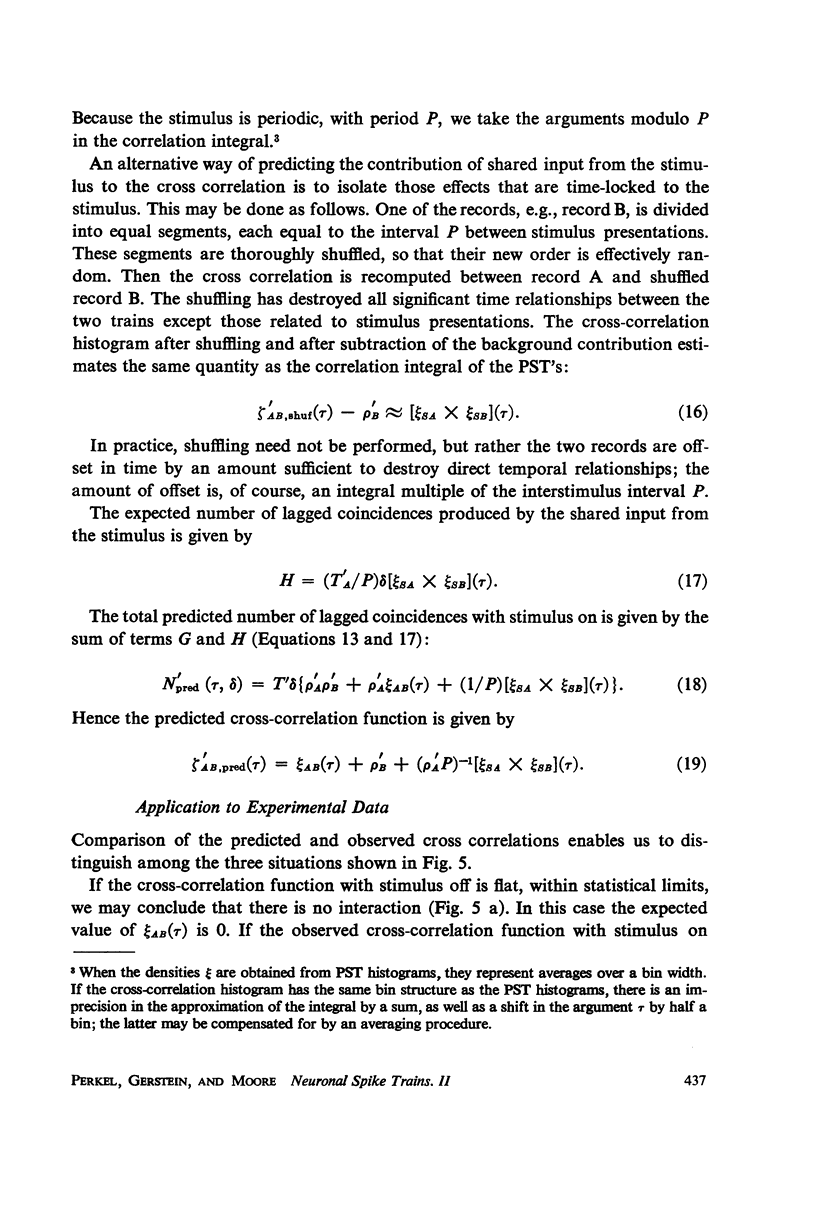
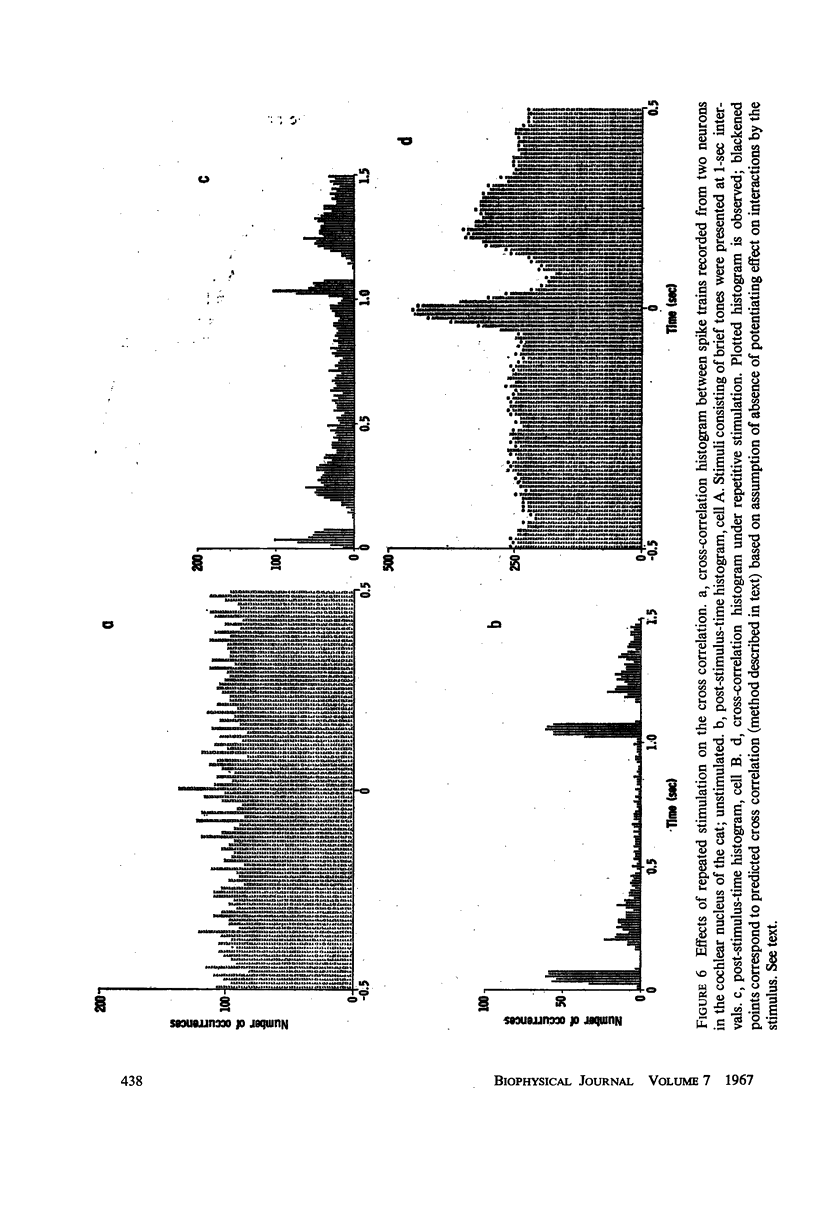
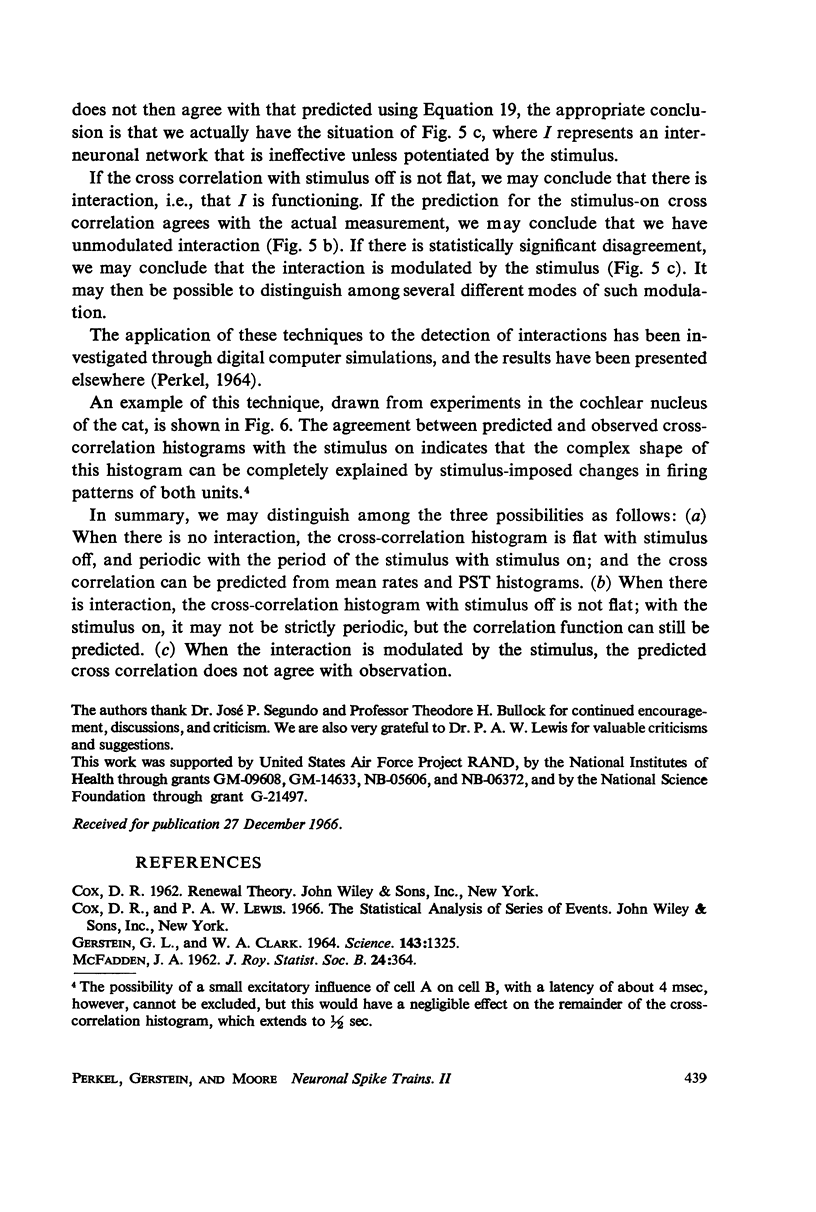
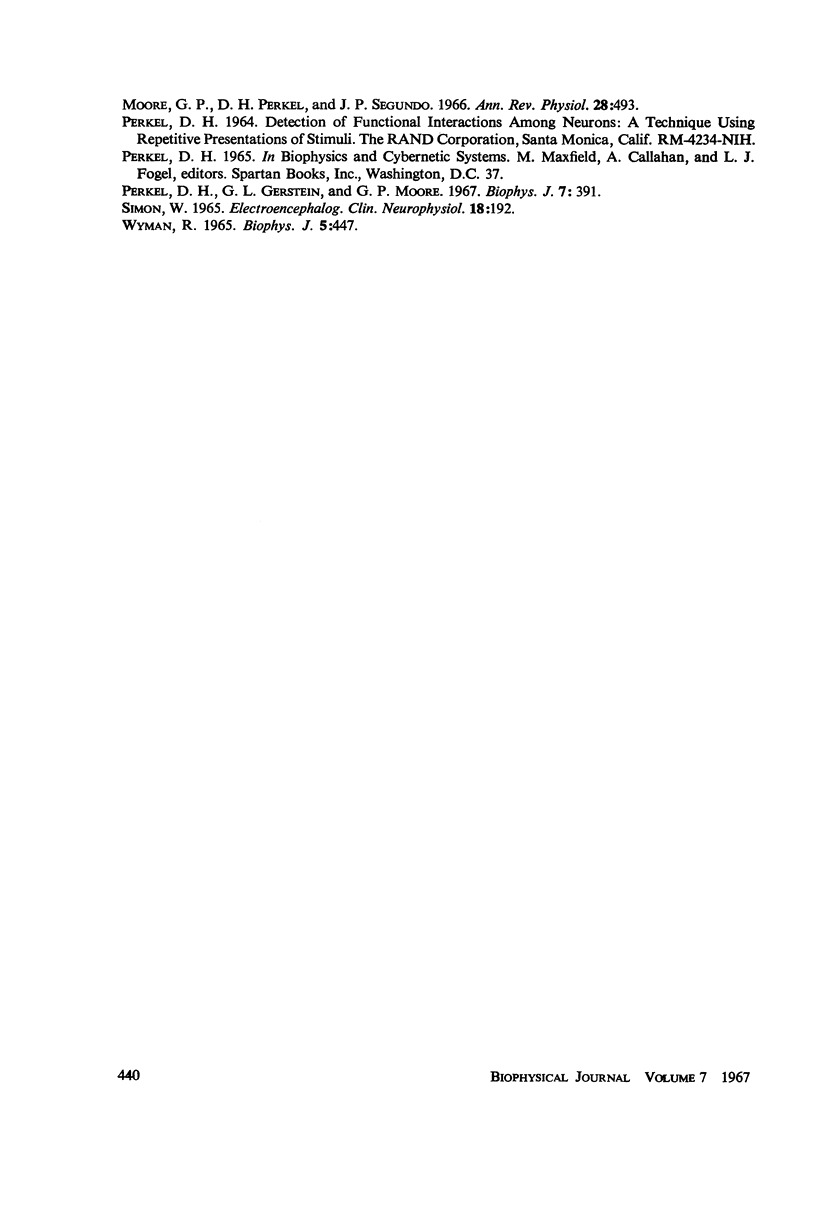
Selected References
These references are in PubMed. This may not be the complete list of references from this article.
- Moore G. P., Perkel D. H., Segundo J. P. Statistical analysis and functional interpretation of neuronal spike data. Annu Rev Physiol. 1966;28:493–522. doi: 10.1146/annurev.ph.28.030166.002425. [DOI] [PubMed] [Google Scholar]
- Perkel D. H., Gerstein G. L., Moore G. P. Neuronal spike trains and stochastic point processes. I. The single spike train. Biophys J. 1967 Jul;7(4):391–418. doi: 10.1016/S0006-3495(67)86596-2. [DOI] [PMC free article] [PubMed] [Google Scholar]
- SIMON W. THE REAL-TIME SORTING OF NEURO-ELECTRIC ACTION POTENTIALS IN MULTIPLE UNIT STUDIES. Electroencephalogr Clin Neurophysiol. 1965 Feb;18:192–195. doi: 10.1016/0013-4694(65)90029-5. [DOI] [PubMed] [Google Scholar]
- Wyman R. Probabilistic characterization of simultaneous nerve impulse sequences controlling dipteran flight. Biophys J. 1965 Jul;5(4):447–471. doi: 10.1016/S0006-3495(65)86729-7. [DOI] [PMC free article] [PubMed] [Google Scholar]


